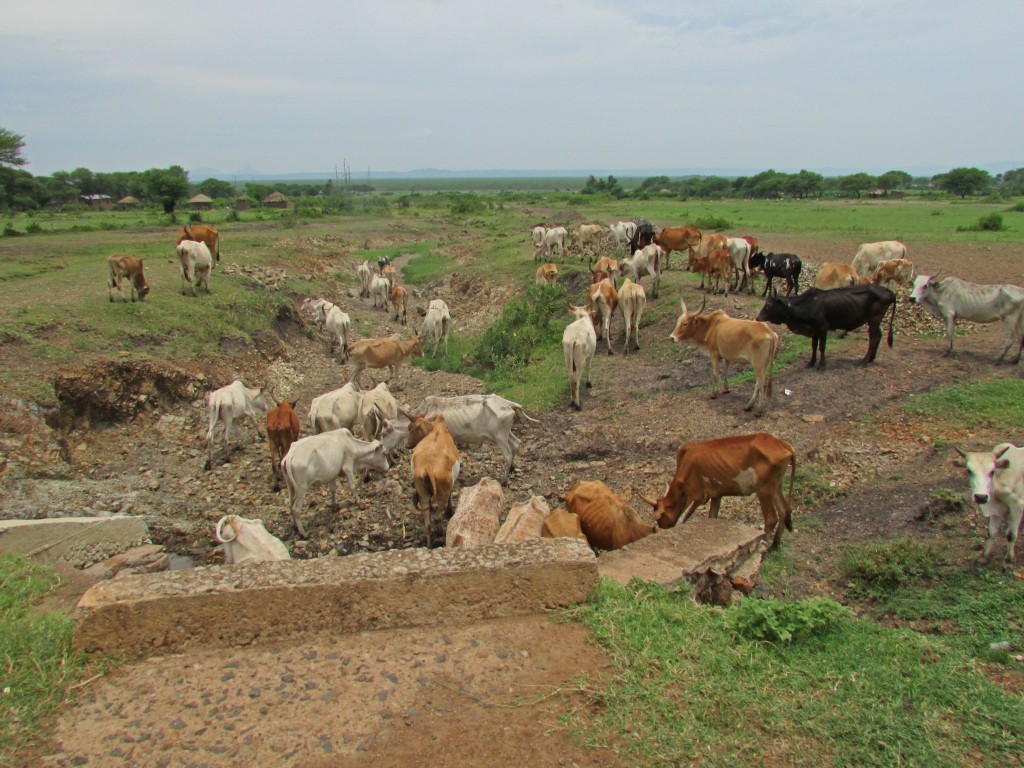Erosion is a major challenge to the Mara River Basin, as identified by the Lake Victoria Basin Water Offices (LVBWO) in Mwanza. The SELVA team, working with the Tanzanian Ministry of Water in Dar es Salaam and the LVBWO, looked for causes and results of erosion while conducting field work in the lower Mara River Basin in March. Erosion causes a threat to water quality, which in turn threatens the health of people, species of fish and amphibians, the wetlands, and Lake Victoria downstream. Erosion can also alter wetland accretion (or sedimentation) by deposition of sediment in places where water formerly flowed freely. Erosion is caused by exploitation of land along the river and its tributaries due to agriculture, harvesting of timber, moving or watering cattle, cattle grazing, mining, or harvesting riparian (river’s edge) plant species. Erosion is also a natural process and is problematic throughout the African Rift Valley due to the nature of the soils and the big rain events featured during the high rainy season. Our team found that the national policy of keeping 60 meters from the river’s edge was followed in some parts of the Mara Basin, but not in other parts. Where the policy is not enforced, people plant up to the river’s edge and allow their cattle to graze into the wetlands.
When eroded material enter a river system, it can be carried great distances or deposited fairly quickly depending on, among other things, on how fast the water is moving and how heavy the erosive materials are. Eroded materials are most commonly soils, rocks, sand, and biotic material. In the Mara, eroded materials also carry with them disease from animal and human waste. Locals told our team that incidents of disease occur more frequently during the rainy season because the surface runoff. The Mara River begins at elevation in Kenya and the waters move at a high velocity through the landscape as it descends in elevation. Through the Serengeti Park the waters fluctuate height and velocity in tandem with any rain event, but the water moves fairly well, collecting in some areas to create hippo pools. Once the river has reached the Mara Wetlands on a valley floor in Tanzania, the waters have slowed to almost stillness. It is at the point when the waters slow down that most of the eroded materials it is carrying are released to the floor, or bed, of the river. Chemical bonds are created in this process that either bind, consume, or release eroded material for further movement or to become part of the landscape. In 2015, the regional government officer who went out with our SELVA team-member pointed out the clarity of the Mara River water as it exited the Mara Wetlands (dark but clear) as opposed to further upstream (brown).
SELVA identified some solutions for soil erosion already practiced in the Mara Basin. Firmer policy enforcement of keeping the 60-meter area adjacent to the river and its tributaries free of agriculture or cattle grazing will encourage local plant life to thrive and the roots will bind the soils in place. Planting more trees along the river can buffer against areas where severe erosion has occurred. Restricting the harvesting of papyrus or other riparian plant species. Additional suggestions may include: identifying areas of specific water access and limiting human impact to those areas, engineering riverbank buffers in areas where erosion is extensive, educating local communities on how to reduce erosion through best practices.








Recent Comments